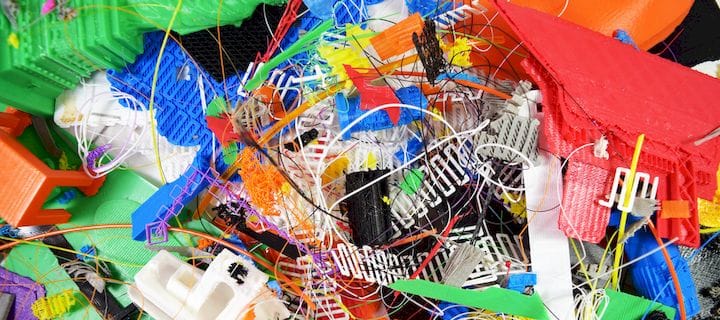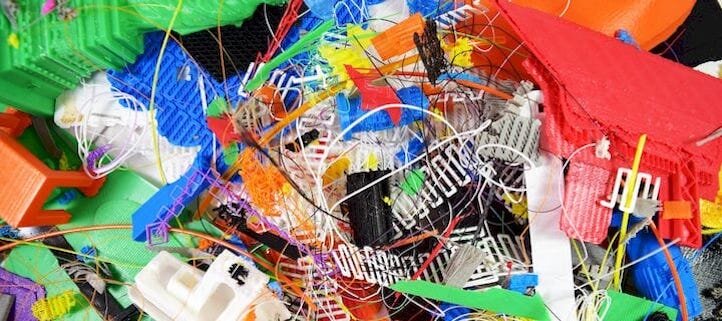![There is a way to deal with the problem of endless 3D printing scraps [Source: Replay 3D]](https://fabbaloo.com/wp-content/uploads/2020/05/image-asset_img_5eb0a4afaa14c.jpg)
I’m looking at Replay 3D, a seller of recycled 3D printer filaments.
This is a filament manufacturer and distributor, like many others. But Replay 3D specializes in recycled material, and even encourages recycling of filament in a special program they call RePLAy3D. (For recycling PLA, get it?)
Here’s how the program works: you first purchase a seemingly normal spool of PLA from Replay 3D. It’s delivered to you in a box, much like any other spool of filament might be.
But then you don’t throw away the box. Instead you re-use it by filling it up with PLA scraps from your 3D printing activities. These could be old product versions, failed prints, discarded print rafts, snipped-off support structures or just stray solidified gobs that fell off your drippy nozzle. All are recyclable.
You need to request from the a pre-paid shipping label, as I expect not everyone participates in the program and thus they don’t want to be wasting postage on shipments that never occur. Just paste the label on the now-full spool box and send it off to Replay 3D, where they presumably will recycle this material into new filament spools.
They offer a rewards program for frequent users, and even a kind of certification program where a participant could declare their ecofriendliness by means of a decal. For those wondering about the ecofriendliness of shipping bits of plastic around the world, they offer a carbon trading program where a portion of a planted tree could, in theory, offset the carbon generated by the transport of recyclables.
But what about the original PLA spool? Was that made from recycled material? This is where it gets a little strange.
The PLA spools you purchase from Replay 3D are said to be made from recycled material, but it’s not what you think. They explain:
“Our 100% Recycled PLA Filament is sourced from US-based filament manufacturers. We worked with filament makers in sourcing their scrap materials and re-introducing it into the manufacturing process.”
Ok. The PLA spools are NOT made from the recycled material you send back to Replay 3D. This is not unexpected, because I foresee tremendous technical challenges in actually reusing returned material. The scraps may be “PLA”, but they could easily be of a slight different chemistry if not all originate with a single source. In addition, this recycled material will have different colorations, as there are an infinite number of possible dyes and proportions involved. How could you possible brew this recycled material together and hope to get any kind of consistent filament, especially over multiple batches? Thus they don’t use the returned material for their filament spools.
But what happens to all that returned material? All they say is this:
“RePLAy Closed-Loop Recycling is our flagship program where 3D printers can easily and responsibly dispose of their old prints and scraps.”
My guess is that they might take all the returned material and ship it off to an industrial recycler equipped to boil off the dyes and re-purify the material into raw PLA. Whatever process they use would likely be financially feasible only at large scales, making it unlikely Replay 3D would do this themselves.
Another darker possibility is that Replay 3D might simply drop the materials off at their local city recycling depot. I’m really hoping they would not do that, as the originator of the scraps could simply do the same in their home city without requiring transport of materials.
All this tells me is that my suspicions of recycling filament have merit. Filament material recycling is extremely difficult and involves many constraints.
Via Replay 3D











An inventive designer has developed a method for producing 3D paper objects using recycled paper and 3D printed molds.